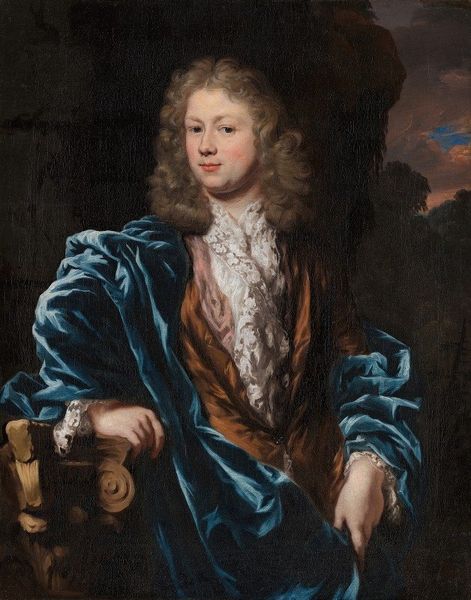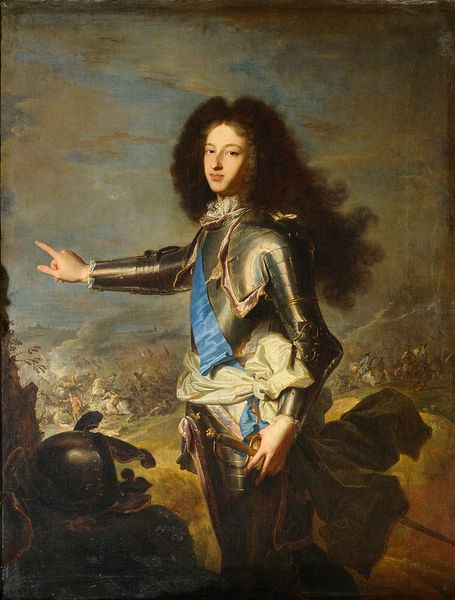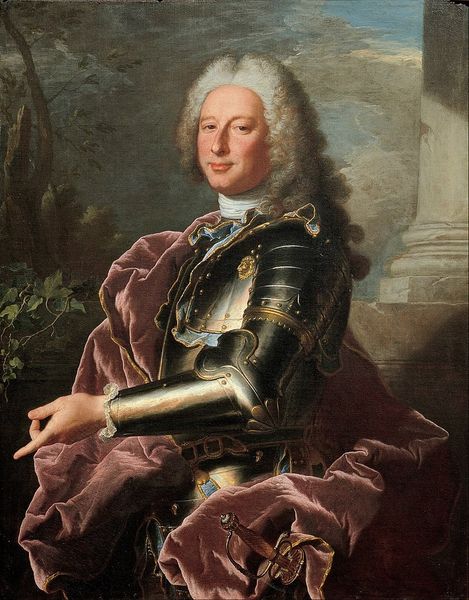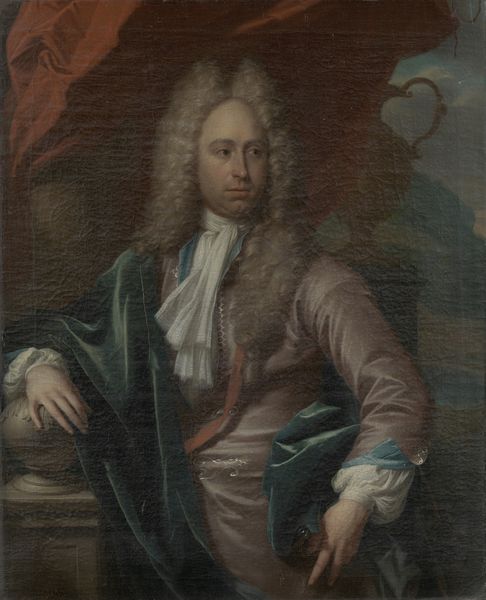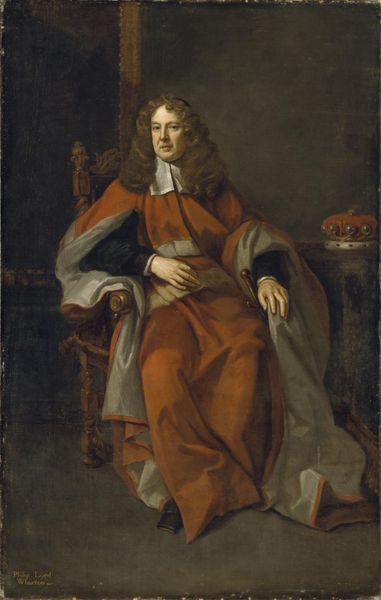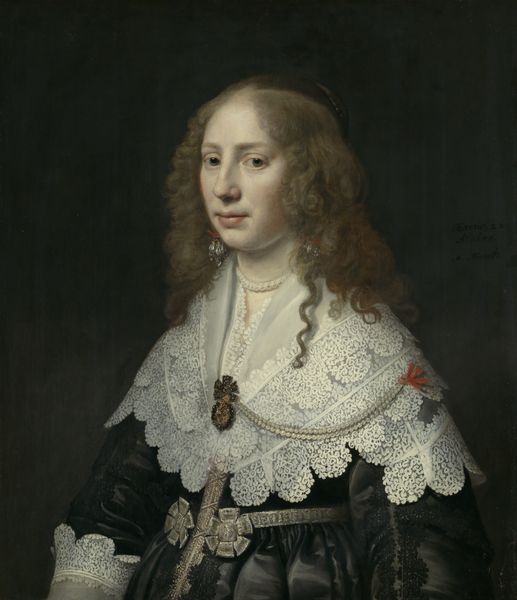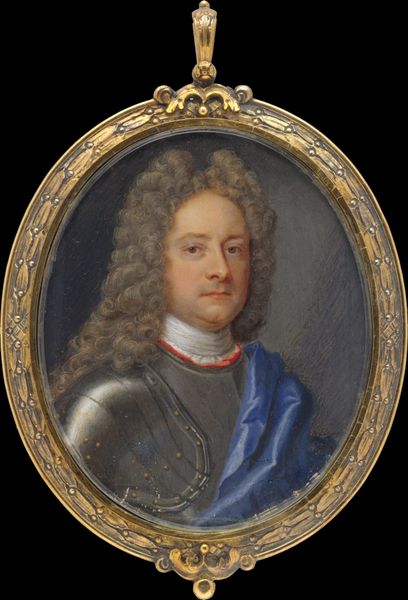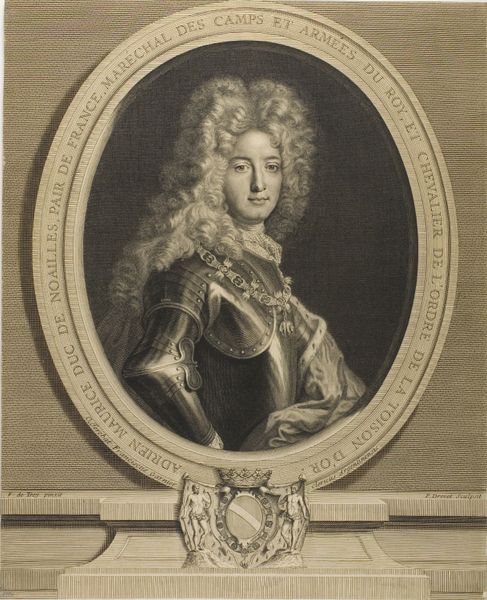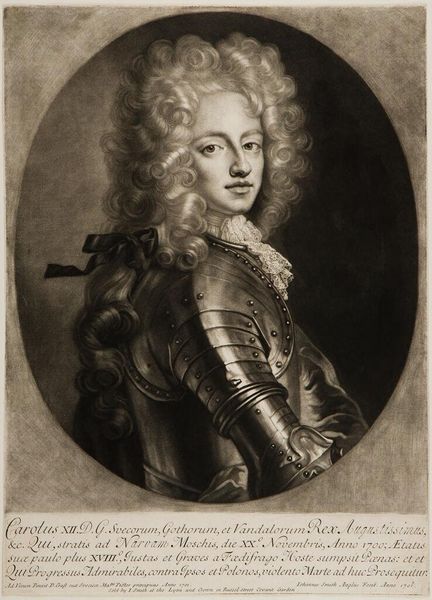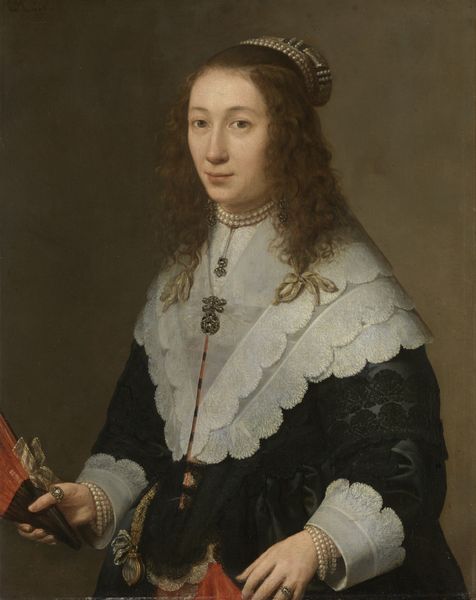
Portrait of the Duc de Broglie 1693
0:00
0:00
hyacintherigaud
National Gallery of Denmark (Statens Museum for Kunst), Copenhagen, Denmark
oil-paint
#
portrait
#
baroque
#
oil-paint
#
figuration
#
oil painting
#
history-painting
#
academic-art
Copyright: Public domain
Editor: This is Hyacinthe Rigaud's "Portrait of the Duc de Broglie," painted in 1693, using oil paints. The subject's gleaming armor and elaborate wig make it feel very grand and stately. What jumps out to you when you look at it? Curator: Considering the material components, let's start with the process of creation. Look closely at the surface; each layer of oil paint reveals deliberate choices. The artist uses costly pigments to emphasize the Duc's wealth and status. Do you see how the gleam of the armour and the luxurious fabric weren't just painted, but constructed through the very means of production? Editor: Absolutely, the textures are so meticulously rendered. The metal looks truly metallic, and the cloth seems soft. So it's about more than just depicting a rich man; it's using expensive materials and labor-intensive techniques to _embody_ wealth. Curator: Exactly. This isn't simply about representing power, it is an exercise in _demonstrating_ power through material means. Think of the workshops involved: the miners extracting pigments, the craftsmen weaving the fabric, the artist skillfully layering paint. It's a complex social network manifested in a single image. Consider the cost. How does that reflect the relationship between art and social class in 17th-century France? Editor: It's like a symbol of concentrated economic power, frozen in time and hung on a wall. The very materials speak of societal structures. Curator: Precisely! It reveals how even seemingly straightforward portraiture served to uphold and propagate existing power structures through its mode of production and materiality. What was previously perceived as “natural” in history paintings actually involves heavy capitalistic dynamics of the era. Editor: I never considered the economic aspect so deeply before. I guess it makes you question everything in art history from labor to resources. Curator: Indeed! That's a crucial starting point to question any kind of representation through their making.
Comments
No comments
Be the first to comment and join the conversation on the ultimate creative platform.
